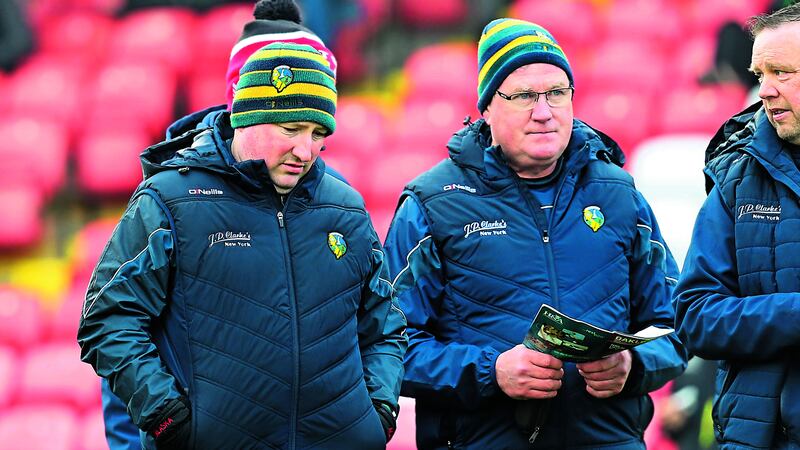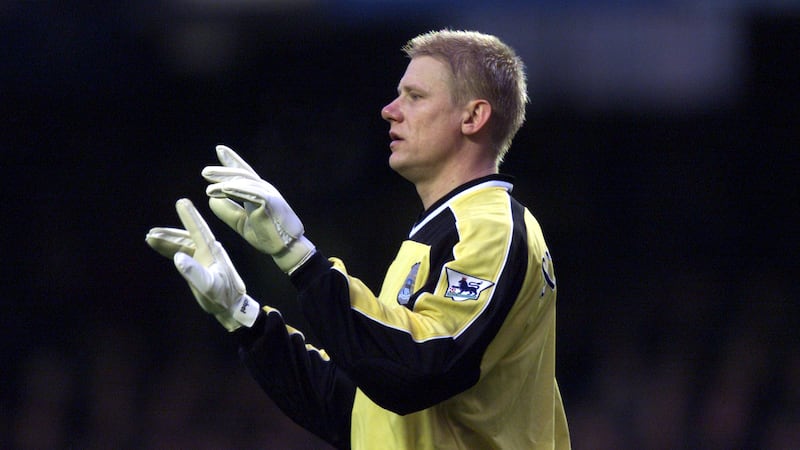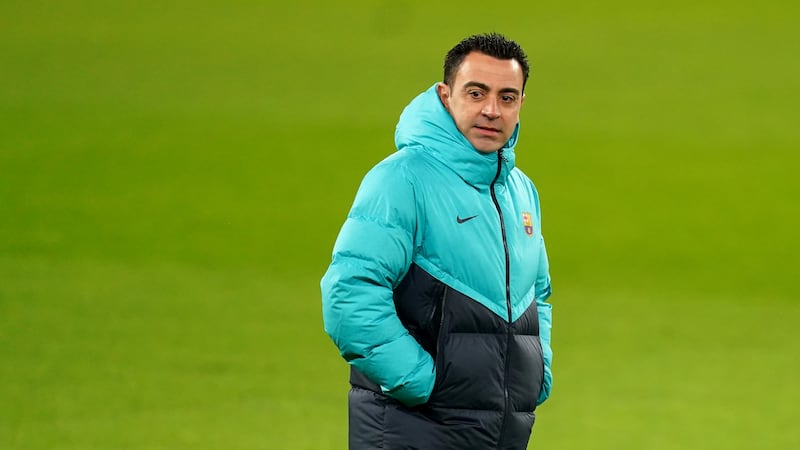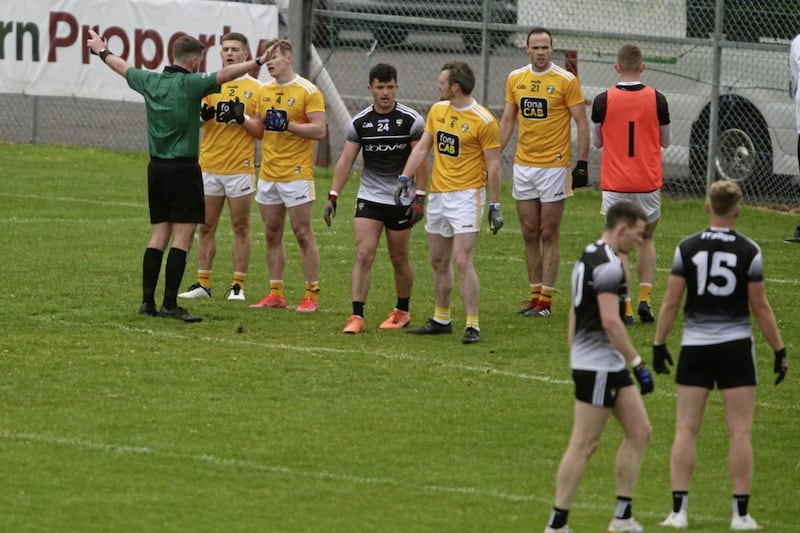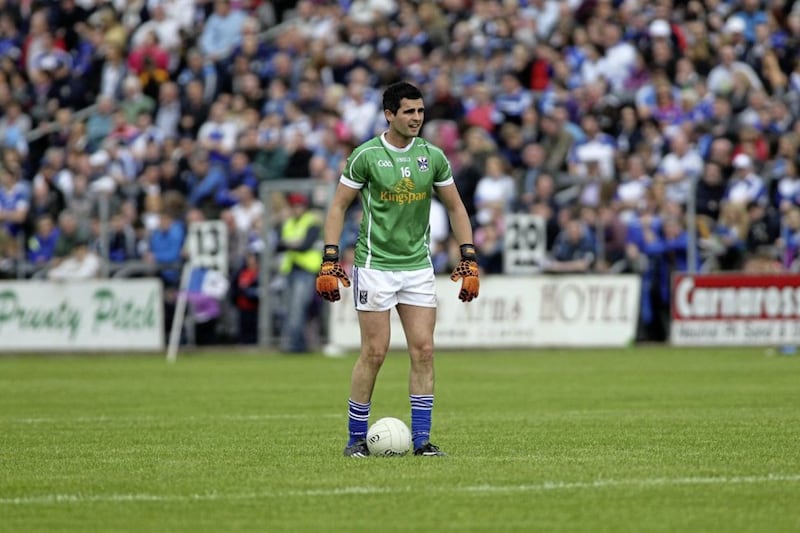WHEN Terry Hyland answers the phone, it’s always the same routine. He’s on the job in his hardware shop, running three conversations at once.
And then the customer disappears and he’s yours for a few minutes.
“Now,” he says, sounding stern, before bursting into spontaneous, inexplicable, infectious laughter. That’s your cue.
When he stepped away from the Cavan job because of work commitments at the end of 2016, his wasn’t one of those faces you assumed you’d see back on the inter-county circuit any time soon.
Then Leitrim called. And that infectiousness seemed the perfect fit with a county that, since that famous provincial win in 1994, had seemingly settled for its place in the world order.
Here they are now, seven months on from his appointment, heading to Croke Park having earned their step out of Division Four for the first time since 2008.
They were at Headquarters for the All-Ireland semi-final in ’94 and a Tommy Murphy Cup final in 2006. That’s it from their recent past.
“The whole population of Leitrim wouldn’t fill the Cusack Stand,” he reminds you.
But that’s not by way of excuse.
“Being involved with Leitrim is like being involved with a good club. You pick any county, take Cavan. If they were playing in Croke Park tomorrow, they might bring 20-25,000, which is about a third of their population.
“You go to Kerry and they might bring 40,000, which is less than a quarter of their population. Not everybody in a county follows their team.
“But in Leitrim, 95 per cent of people follow it.
“If Leitrim brings 10 or 12,000 people, that’s a third of their population. You speak to anybody in Leitrim, they’re talking about football.”
They’ve gone three sessions a week since the start, but much of that work’s been done in Dublin, where 18 of his squad were based at the start of the year.
Often times, it’s been split sessions, with half the team training at home in Leitrim and the other half in the capital.
The Friday and Sunday sessions were with full squads, but to operate that way and have success in the first year of the project is all the more remarkable.
Those that saw it won’t have forgotten Emlyn Mulligan’s frankly broken-hearted interview on RTÉ last winter when Leitrim were thrown into the shark’s pool by the Connacht SFC draw.
Division One Roscommon away, and in the event of a miracle, Division One Mayo then, while Galway would wait in the final.
Hyland had to prioritise, and he chose belief. The bricks he’d use to build it would be the skills he saw in front of him.
They chose to concentrate on the skills while trying to build up the conditioning in the background. Hyland also periodically dropped ideas in that, when implemented well by a team that was winning, operated as feed for the minds.
“Belief…it’s a word that’s bandied about. Belief in sport is not like belief in life or religion.
“In sport it’s something tangible, you can achieve and see, and build on the back of that, on the back of that, on the back of that.
“It’s not a blind belief as such. In the beginning we said if we got our skills levels up, play a few challenge matches and see fellas improving on the back of that.
“Then we talk about setups, put in a few plays and they see that works, and they improve on the back of that. To me, that’s what you build belief on.
“The football end was what we focussed on more than anything else.
“We kinda felt that in Division Four, if we got our skill levels that wee bit better than they had been, there were rewards to be got on the back of that.
“The physical end of it, everybody knows in modern day football that you’re not going to physically change guys around in one year, it’s a two-to-three year plan to get lads into shape.
“We did our S&C [under Enda Lyons] and dovetailed them together, but we didn’t just go straight down the line of thinking if we’re fitter and faster, it’ll get us results.
“It will help, it does help later on, but that’s an 18-month or two-year programme for those lads.”
The idea of belief runs far deeper than the 30 men at his disposal. In counties of a traditional footballing disposition, the game is an identity, a part of the fabric. Above all, it keeps them home.
“There’s 20 clubs in Leitrim. They have a population of 32,000 and the biggest export they have is their people.
“You go to New York and the strongest club there is Leitrim, they’re the best supported. Because why? That’s where their people are. It’s the same if you go to London.
“That’s unfortunate, that’s geography, lack of employment and lifestyle choices as well. It’s not one particular thing.
”Down the years it would’ve been lack of employment moreso than nowadays. That’s what they have and lookit, Cork has more clubs than anybody else and they find themselves in a tailspin at the moment. It’s not necessarily about the numbers.
“People will build on the back of that. You’ve a fella who’s a teacher and says ‘I’ve a chance to go to Dubai for three years, but I’m playing with Leitrim and they’re getting a bit of joy and I’m enjoying it, that’s what I want to do’ and there’s a decision to make. Or a builder going to New York. There are decisions to make that they didn’t have before.”
